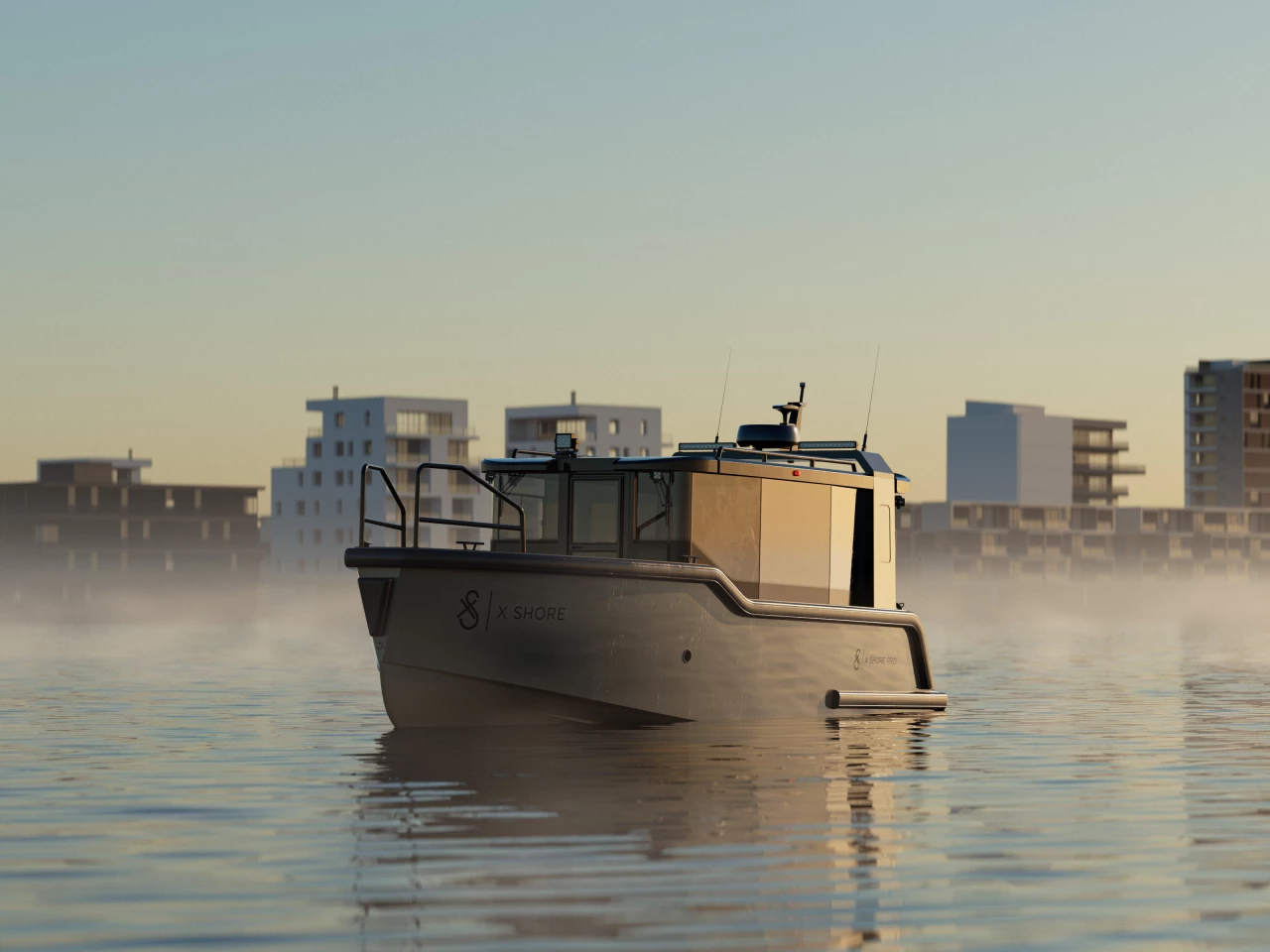Swedish electric boat builder X Shore has announced its third model, which is built on the same platform as the company's flagship Eelex 8000 but is aimed squarely at the professional maritime sector.
X Shore made its US debut in 2021 with the 8-m-long (26-ft) Eelex 8000 e-boat, followed by the smaller and cheaper X Shore 1 last year. But the company has returned to the blueprint of its first model to build out the X Shore Pro – which is being aimed at organizations like the coast guard and companies operating shuttle services.
In fact, one of the first Pros to be sold will be used to transport school kids around the Swedish archipelago. It's also ready to offer a clean alternative to vessels powered by an internal combustion engine (ICE), in light of regulators getting tough on emissions.
The company notes that Norway recently passed a resolution to clean up cruise and ferry operations around Heritage sites by 2026, and Amsterdam won't be allowing commercial boats running diesel engines on its canals by 2025. A number of countries – including Austria, Switzerland, Germany, Italy and Denmark – have started banning ICE-powered boats from lakes. And businesses in Michigan were recently offered "a sustainable and cost-effective way to transition to electric-powered vessels" in the shape of the Fresh Coast Maritime Challenge.

"The X Shore Pro shows that electric boats can serve industry and deliver change at-scale and reach the lives of more people," said company CEO, Jenny Keisu. "We must not expect regular citizens to single handedly drive the major net zero transition we need to mitigate climate change – this change must be driven by powerful figures such as companies, cities, and politicians. In launching the Pro, X Shore is providing a valuable tool to reach sustainability targets."
The Pro is being offered with a cabin rocking an interior that can be configured with seating for eight passengers and two crew, or as required by the business model. The workboat can also be had as an open version with more cargo space on deck. Each model will be built to order at the company's facility in Nyköping, Sweden.

Though detailed specs have not been given, X Shore suggests that the Pro will mirror the configuration of the Eelex 8000 – which could translate to a 20-knot (23 mph) cruise speed and a top speed of 30 knots (35 mph), and a range of around 100 nautical miles at low speed or 20 nm at cruising speed.
As is common for business launches, pricing has not been revealed but the starting price for the model upon which it based comes in at US$295,000.
Source: X Shore









